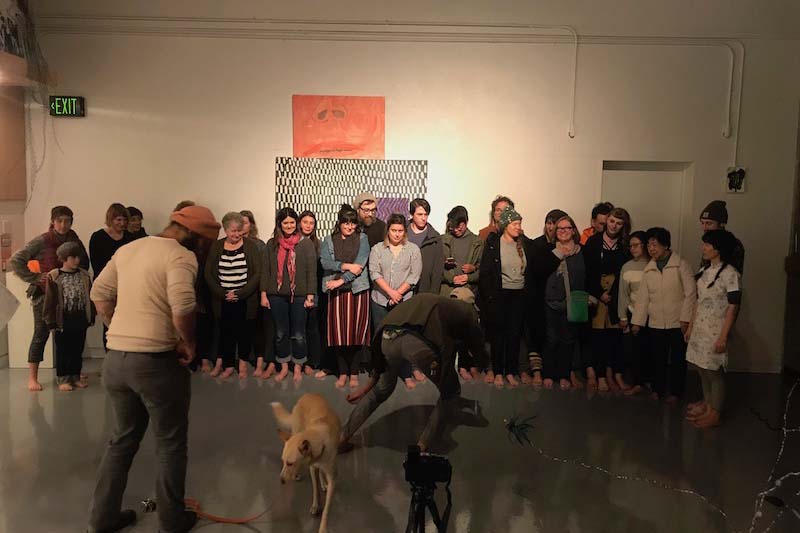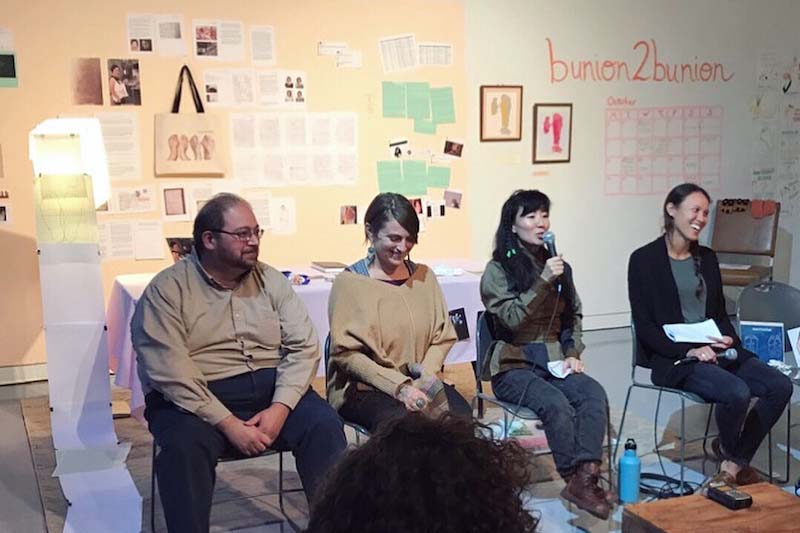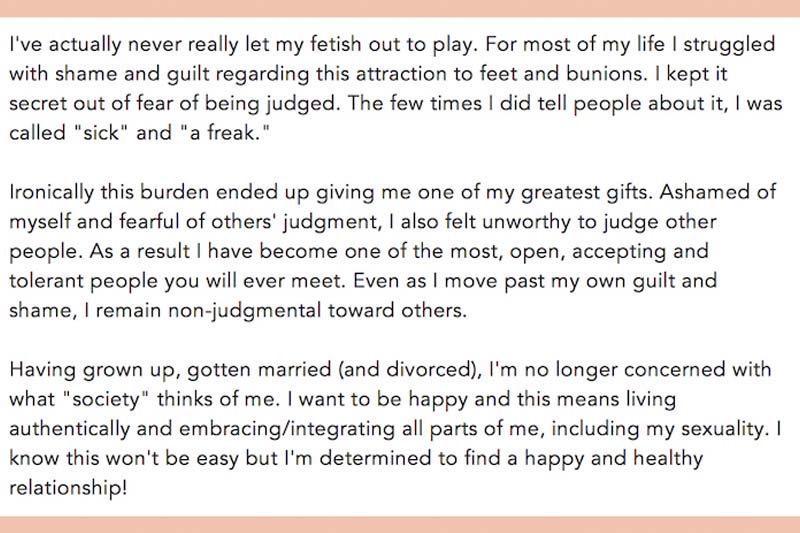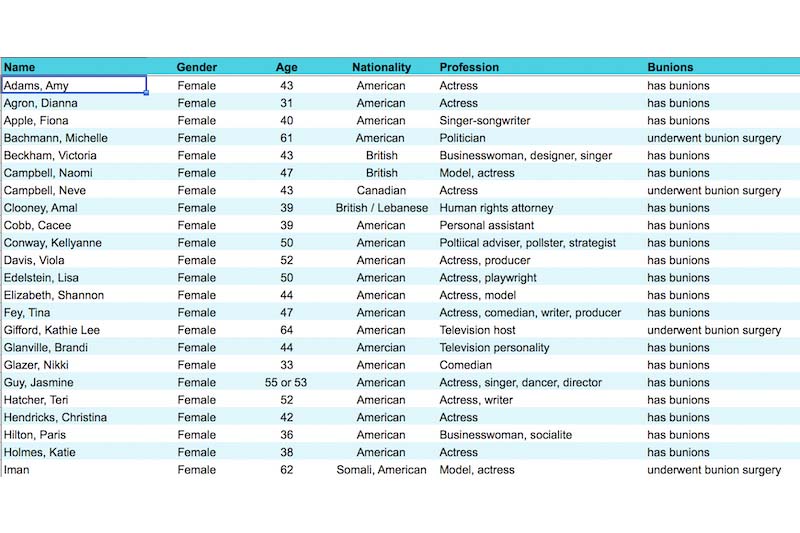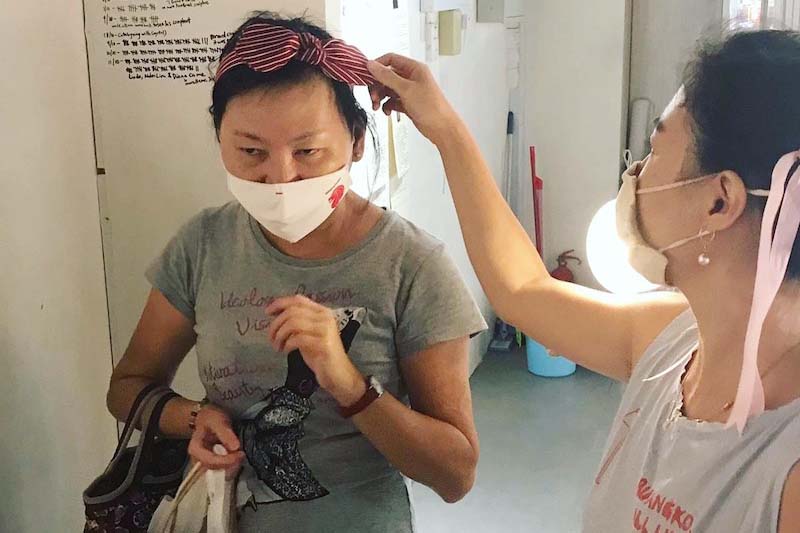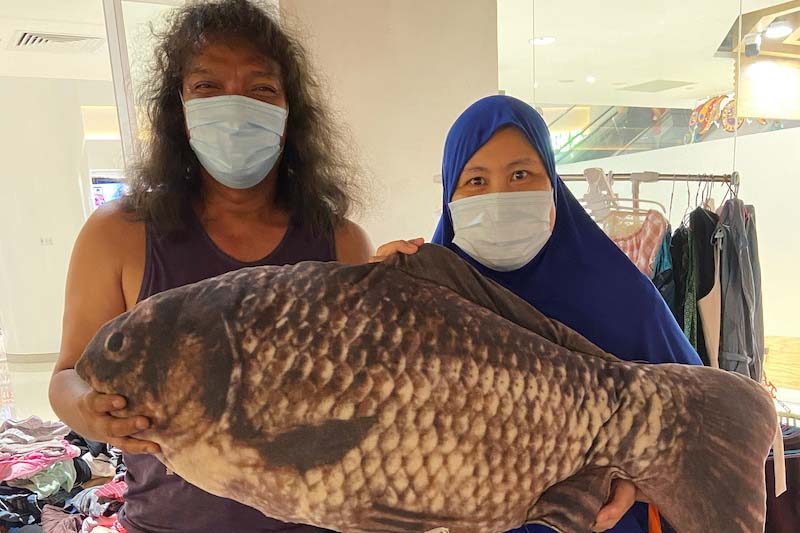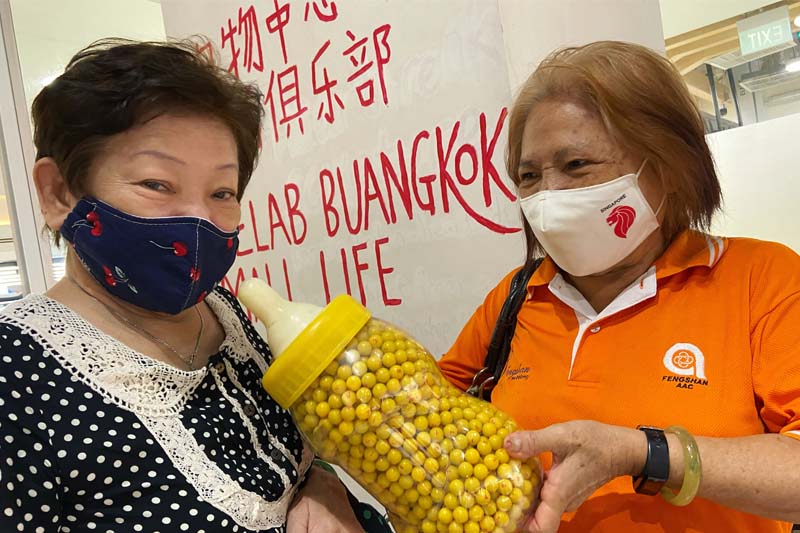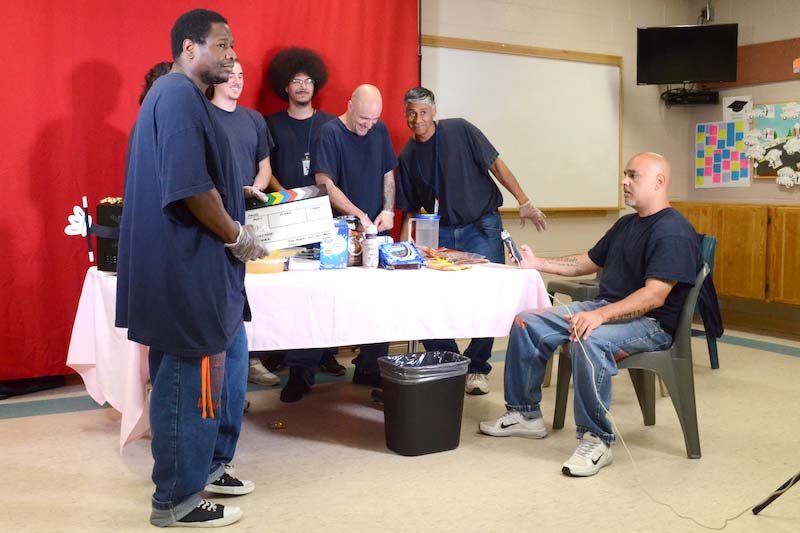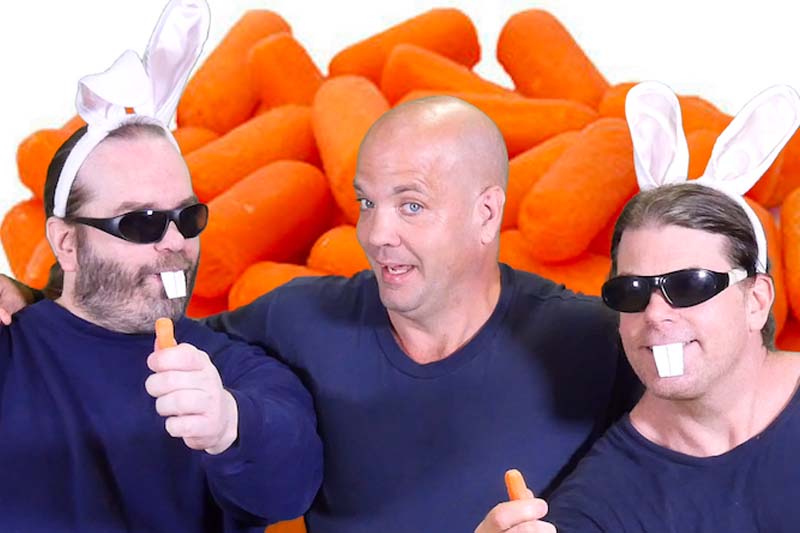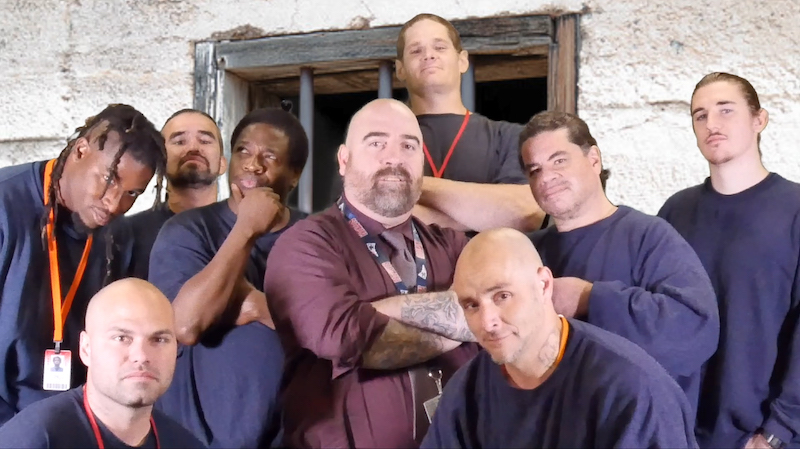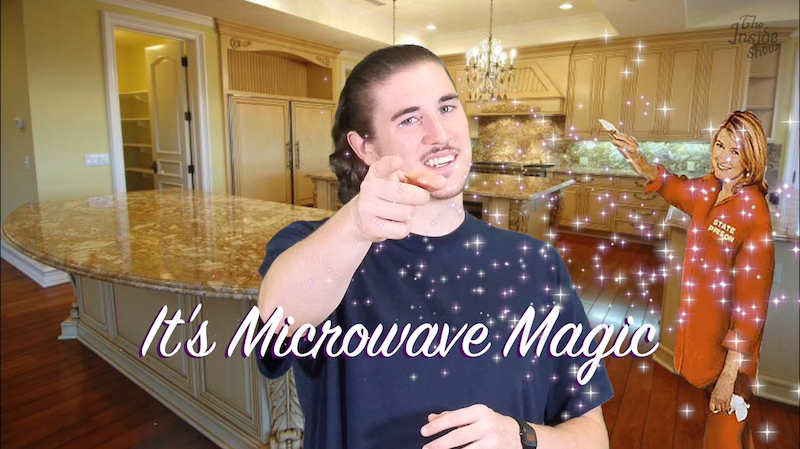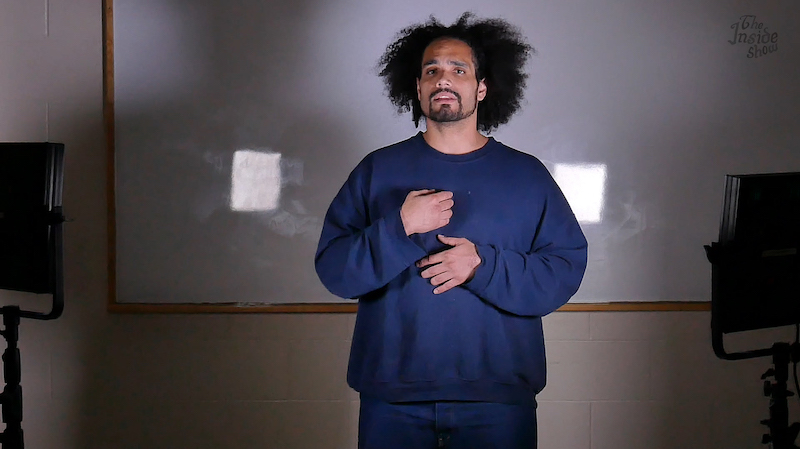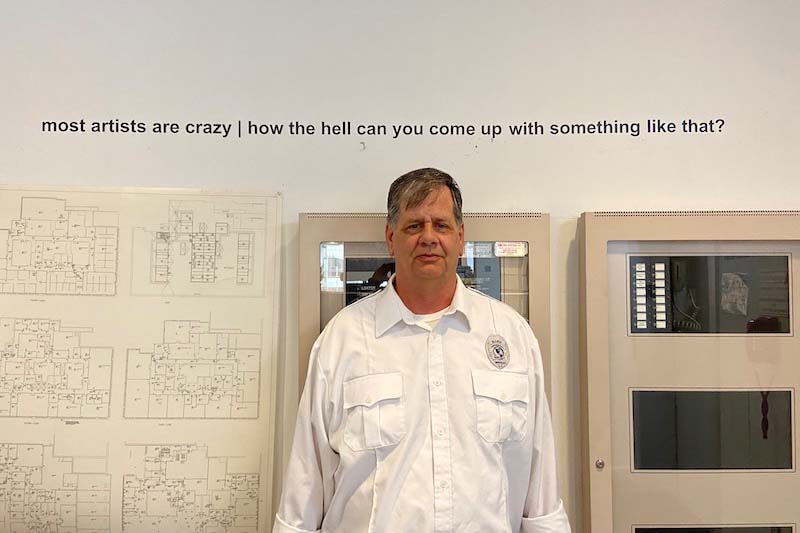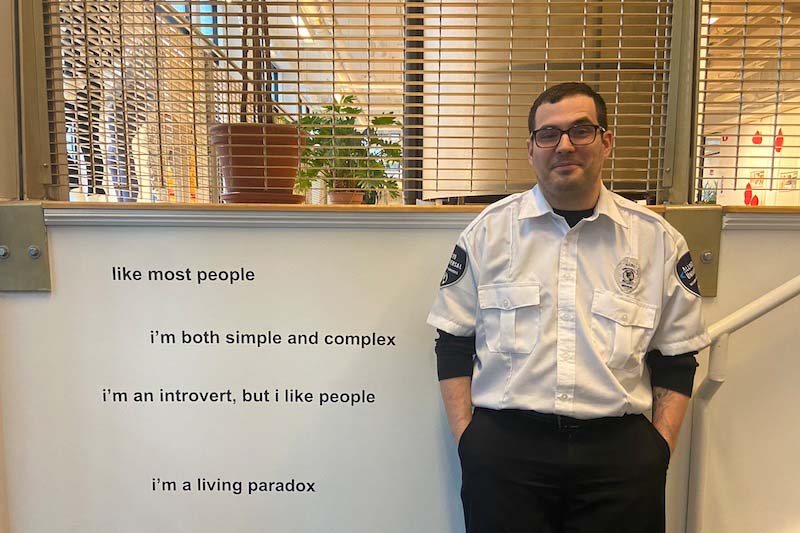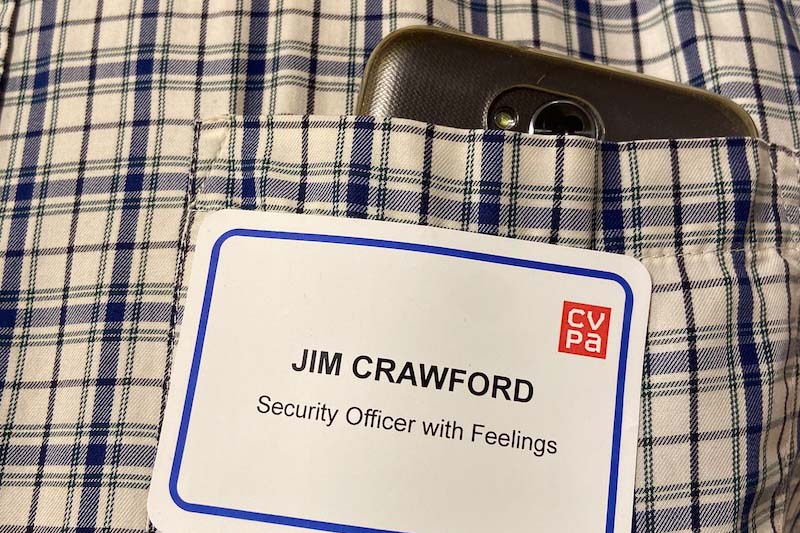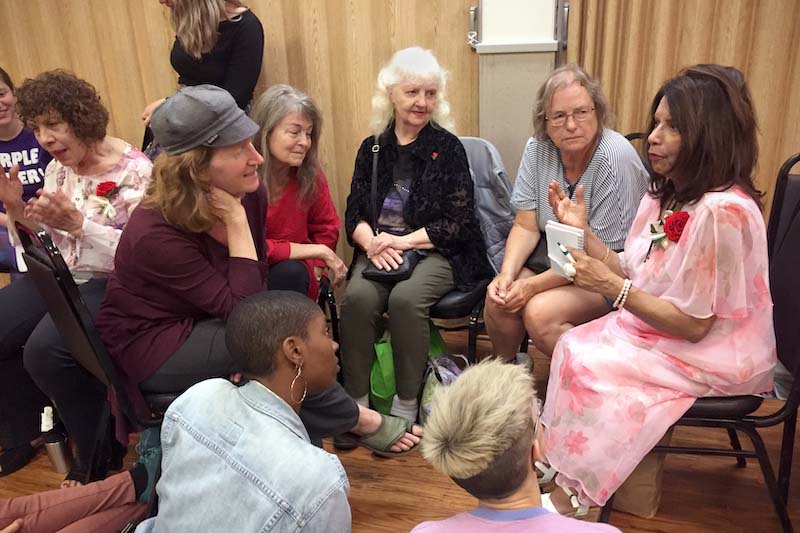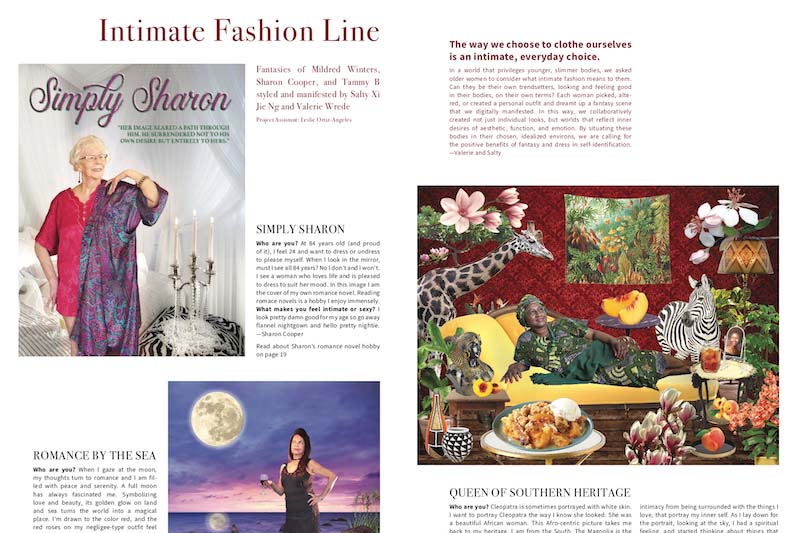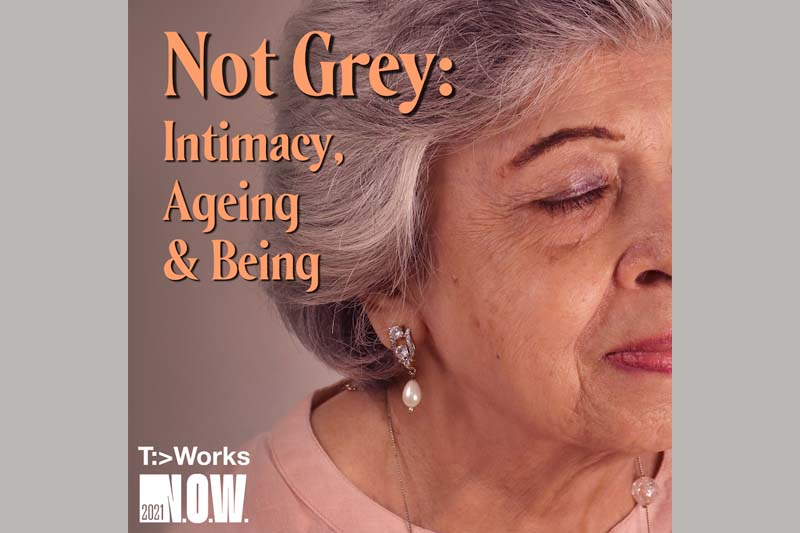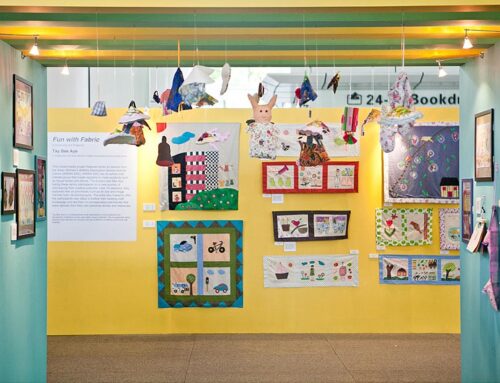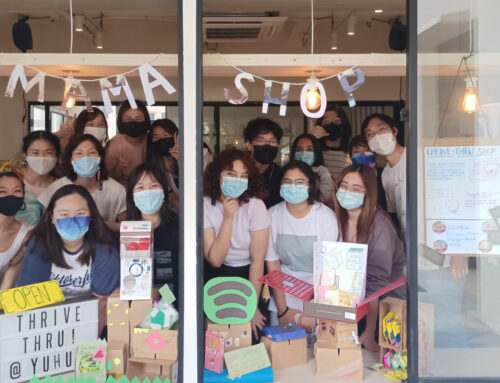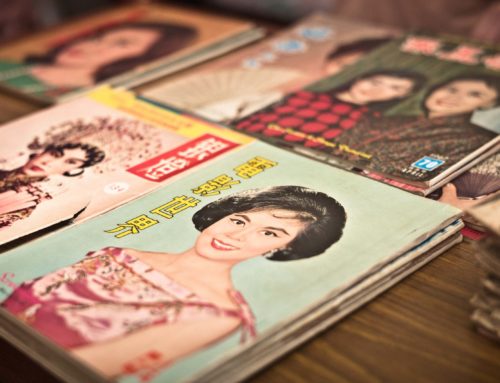Library / Field Studies
Being Ourselves Together, A Kind Of Alchemy
Library / Field Studies
Being Ourselves Together, A Kind Of Alchemy
By Salty Xi Jie Ng
16 August 2021
Cover Image: (Back row, from left) Sharon Cooper, Susan Green, Erika Dedini, Jacqui Jackson, Roshani Thakore, Maureen Phillips. (Front row, from left), Tammy B, Salty Xi Jie Ng, Crystal Sasaki, Valerie Wrede, Betty Canham, Mary. (Missing collaborators: Mildred Winters, Ellen Gee, Pamela Sky Jeanne) ‘The Grandma Reporter’ Issue 2: Intimacy, Portland OR, USA, 2019
In sharing and holding space with other living, breathing beings to make art, I work to create alchemical conditions for people to be themselves in a violent, dehumanizing, often cruel world. In some sense, that is all I can purport to offer in participatory or collaborative processes. By providing a space with sparks and prompts that challenge, magnify, see, or subvert the everyday and the issues we face, some kind of transmutation happens—in the same way that encountering any artwork changes us in small or profound ways, simply because we meet a new idea. In every collaborative project, energetic bodies with histories and personalities dance with each other, constellating their individual selves and the collective in mysterious ways. That we are changed over and over again by our encounters is the beauty of this alchemy.
It might help to begin with some personal definitions. Art, for me, is anything someone calls art. Social forms of art are borne from ways of making that involve people other than the artist(s) who conceptualised the work. The spectrum is infinite, and can include: an interactive installation where women visitors are invited to take a photo of their bums in a private booth (Amanda Heng’s Singirl, 2011); a two-hour event where a group of children write statements on what freedom means to them; a seven-session photography project with housewives to reimagine their domestic lives; a five-month dialogical process with seniors to create a movement and oral history performance with a community museum; a three-year collectively-run space in a low-income neighbourhood, complemented with talks, discussions and workshops. The possibilities are infinite. All involve some level of interaction and contribution from people, with whom the work then shares authorship.
More definitions: curators are people who select artists to present work; this act rooted in the social is rarely seen or framed as an artistic action. The art world is a social space experienced and imagined by a person depending on their relationship with art and the people orbiting around them. Collectors tend to be richer people who usually buy object-based art rather than social forms of art, but often for investment purposes. Everyone is an expert of their own life. Everyone is an artist (said Joseph Beuys). Some of us dare call ourselves that. Some of us go to art school. Some of us spend time within contemporary art discourse and care about Claire Bishop, Southeast Asian art history and personal networks comprising curators, funders, artists and more. Some of us are privileged or lucky or dogged enough to make part or full-time income from our art practices.
Within this largely insular world exist spaces, usually temporary, where non-art-world experts-of-their-own-lives enter collaborative projects. They may look around and marvel, “What we’re doing is art too?” Does walking into a space that intentionally includes them turn on a switch for self-exploration, expression, eccentricity? Considering participatory or collaborative art spaces as intimate, semi-fictional paradigms for the real and imagined lives of humans is to see art as living alchemically between fiction and truth. To create together a social space that did not exist before is the manifestation of fantasy or the creation of fiction. The moment it exists, it becomes a new reality, a kind of truth. Hence I describe my practice as living somewhere between real and fictional, that is to say, it is both at the same time. Less interested in the false objectivity of so-called truth, or the boundless freedom of fiction, I am thrilled by the possibilities and tensions arising from the potent meeting of both, resulting in an erotic magic. This eroticism is as expressed by Audre Lorde: “We tend to think of the erotic as an easy, tantalizing sexual arousal. I speak of the erotic as the deepest life force, a force which moves us toward living in a fundamental way.” How should we wake in the mornings? How is this related to collaborative art-making?
I have not arrived at a framework or methodology that can be condensed, taught, or replicated. It is more intuitive and mysterious, an amorphous learning process requiring a potent mix of compassion, care, humour, humanity, serendipity, intention, respect, flexibility, humility, wit, play, risk, bravery and naughtiness. We are here finding words for something that resists definition. I do not know if members of such a space can describe this alchemy either. And I do not underestimate what it takes to be a member of such a space. Over the years, I have been humbled by the immense trust put in me by my collaborators and project participants. In some sense, stepping into such a space—whether for a few hours or several months—rests on the decision to experience something new. Perhaps we are actually, before anything else, creating conditions for people to first be curious, then feel safe enough to entertain their curiosity. I posit that to be yourself is to see, unhide, excavate, and allow, with an element of risk and a touch of serendipity. I posit that to be yourself is not to be a fixed thing, but to let oneself be vulnerable, be mutative, be many selves—twisted or weird as they may be. Cheesy as it sounds, I posit that to be yourself is simply and profoundly the most basic and highest order of being.

Salty Xi Jie Ng and paternal grandma Teo Siew Lan’s feet, ‘bunion2bunion’, 2017
Unhiding
Questions help, or can be a place to begin. For example: What is the person who sat next to you in elementary school doing right now? Who are you in love with? Who cleans this art museum? Who gets to say what is art or who is an artist? Which episode is your grandma watching in her 300-episode drama series? Can I love the seeming aberrations that are my chronic bunions? I have had chronic bunions since I was a teenager, which became a source of fascination. I tried to cure them in many ways, yet cherished them as my embodied connection to my grandmothers from whom I inherited them. The hallux valgus is often ignored or disliked, a metaphor for the hidden parts of ourselves or that which we disdain in others. bunion2bunion, a transdisciplinary project, was a way to unhide the bunion from its invisible and misunderstood depths, birthing new perspectives towards beauty, defect, inheritance, fetish and more.
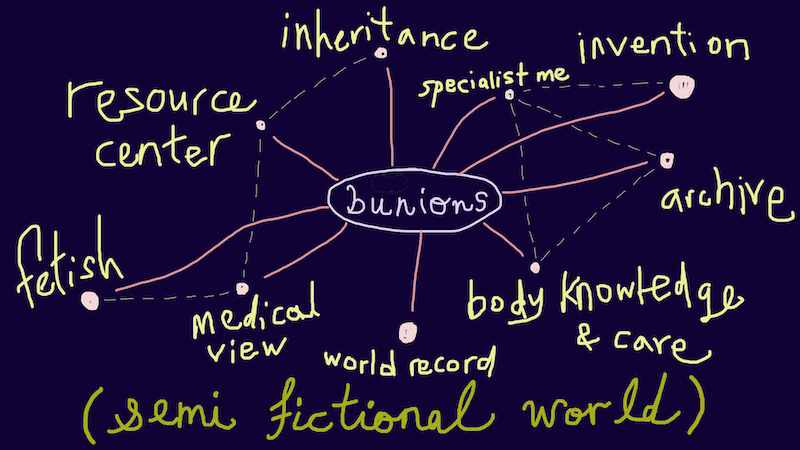
A mindmap on bunions, ‘bunion2bunion map’, 2017 (From the left, text appears as follows) Resource center, fetish, medical view, world record, body knowledge and care, archive, invention, specialist me, inheritance. (Semi frictional world)
The bunion2bunion multiverse included casts of my grandparents’ bunions, collected writings on inheritance with accompanying bunion2bunion tote bags, a Hallux Valgus Resource Centre, bunion archive, bunion massage workshop, bunion awareness poster-making session, Bunion Measuring Apparatus invention by the Bunion Research Specialist (myself), performance of acts of care with my grandmother, and a Guinness World Record attempt to photograph the most bunions in a single group photo. To my surprise, I was found by men with bunion fetishes, who scour the internet for bunion content. They bravely agreed to be interviewed. One of them, Adrian Weber, had spent years trying to understand his foot fetish and bunion obsession. He eventually came to Portland, Oregon, to be part of a bunion2bunion event, The World’s First Bunion Panel Discussion. Describing it as a confessional and cathartic experience, he said it was the first time he spoke publicly on the subject. It is my hope that alienating reactions to fetishes and those who have them can be changed. In its many components, bunion2bunion was a way to allow the literal bunion and the bunion in each of us to be seen, breathe, and grow in different, surprising ways.
Allowing
In Buangkok Mall Life Club, I ran an art space in a retail unit in Buangkok Square for a few months during a time where Covid numbers were kept low in Singapore. Many passersby stood outside, curiously gazing in, but when invited would shake their heads and walk away. Perhaps something felt too off-kilter, slightly unbelievable if you went to the mall to pick up more groceries—we had a resident muralist painting a wall, often untidy clusters of items, an installation requesting objects leftover from heartbreak, and more. I suspect many who chose to enter were enticed by the Buangkok Exchange Department, the alternative economy we offered, where one could exchange items one-for-one, regardless of value. This hook was our tool for initial connection and developing relationships.
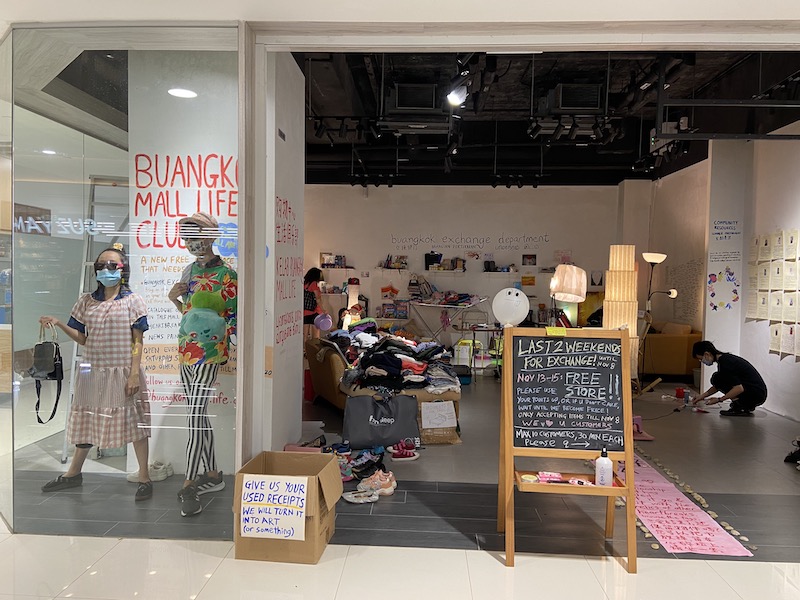
Shop assistants Crystal Ng and alex t., ‘Buangkok Mall Life Club’ storefront, Buangkok Square, Singapore, 2020
I performed a shopkeeper persona that was another side of myself I let out to play, not without the emotional labour that is rarely discussed when talking about social art processes. I wanted to be that person in the lives of my customers whose space they could visit when they were bored, or at the end of a long work day, finding comfort and familiarity on their way home. I would be that neighbour, if you will, who would remember that their son was about to take his PSLE, or that they were looking for a purple handbag, or ask about whether they were happy with the toilet air freshener they took the last time. Throughout the project, a big part of my brain stored minute details of customers’ lives; I lived within these worlds. This was a key part of the work me and my team at Buangkok Mall Life Club performed. In that way, over time, our Legendary Customers (a title bestowed upon regulars with extraordinary traits/behaviours, such as contributing hundreds of items or prodigiously being first in line to examine new drop-offs) became our friends.
Allowing is a form of being oneself. We tried to allow, encourage and embrace as much as possible, letting the space be shaped by new desires emerging from mall usage. These spanned a range of creative behaviour and acts of trust: studying objects with a scholarly determination; new murals and scribbly doraemon drawings; leaving a wheelchair and other bags at our space while going to the supermarket; being the self-appointed shop assistant—calling customers in, organising and tidying; resting for hours on our rocking chair with an infant; playing with toys; simply hanging out, which a visitor-observer described as “just wanting to be around other people.” By the end of our time at Buangkok, our Legendary Customers would hang out for hours, sometimes watching over our exhibition, not needing to say much. A companionable silence had settled gently in the space between us, at times erupting into jovial chat, but otherwise, we were an unlikely clan in an unchartered space with the hallmark of a makeshift community club that could hold all stripes.
Offering
In this sense, allowing is to provide a platform that is flexible, welcoming and warm enough for others to enter and express themselves. The Inside Show was a variety show I made in collaboration with inmates at Columbia River Correctional Institution, a minimum security men’s prison in Portland, Oregon. This would not have been possible without a prior two-and-a-half year program I co-facilitated with other artists, as well as the unwavering support of the prison’s program manager. At the heart of the variety show concept was a platform that invited inmates to partake in ways they felt drawn to, hence accommodating different desires, aspirations, and abilities. Roles included scriptwriter, performer, host, interviewer, interviewee, cameraperson, lights handler, sound recordist, prop maker, cook, spicy taste-tester, non-spicy taste-tester. People joined because they had worked with us before, through word-of-mouth or were enlisted by an enthusiastic friend. Together we subverted dehumanizing prison norms by acting, in our time together, as an unlikely film crew making a show. We had roles to play that were different from the over-masculinized, tough roles these men typically found themselves having to put on to protect themselves and get through their sentences. In other words, we gathered around a creative process that is antithetical to the prison industrial complex.
What emerged was an appreciation of creative labour, critical content and community. In acting in skits, or playing audience together, these men got to know and laugh with fellow inmates they might not otherwise have. Naturally, we experienced conflicts which plague any film crew: creative and personal differences, scripts not memorised beforehand, and so on. What was different was that we were on a quest within the difficult conditions of jail—something that I, their free facilitator, would never be able to fully comprehend as I walked out the gates and drove back to my warm apartment after each session. Someone would, unfortunately, become involved in a fight and go to solitary confinement for weeks, or get sent to another correctional facility. The latter meant we would, heartbreakingly, never hear from them again. Things were volatile, yet—or perhaps because they were so—these men put their hearts into our collective work. The resulting programs were varied and included: Microwave Magic (a cooking show inspired by the tradition of prisoners making ingenious meals on their unit’s microwave); skits reflecting on prison life; a panel discussion on Black gang culture; musical acts; stand-up comedy; a poetry performance; a braiding demonstration by the prison hairstylist. (Watch episodes here.) Lurking close behind humorous moments were prison conditions that one could not unsee, should not unsee. The simple sets all located within a single classroom and the fact that everyone wore the same thing challenges audience experience: a greater suspension of disbelief is required, while pieces of prison reality are revealed but the whole picture is never fully shown. Even though the men’s uniform could not be replaced by any costume, several said they felt, for the few hours each time we gathered in our designated sanitised classroom, that they were not in prison, that they could be themselves.
Seeing
Social art projects then, are opportunities to see people, and for people to feel seen. After writing a manifesto connecting her labour as an artist and mother with that of maintenance workers, artist Mierle Laderman Ukeles performed with three hundred maintenance workers at the Whitney Museum of American Art, inviting them to consider one hour of their eight-hour shift as maintenance art. She was then appointed the first official artist-in-residence at the New York City Department of Sanitation, where she brought attention to its employees’ invisible labour and discrimination they faced. Notably, between 1979-80, she shook hands with all 8,500 sanitation employees of the Department. In her footsteps, I often think about the silent labourers behind big organisations. In an art context, they are the janitors of the MoMA, or the security officers of the Louvre.
When I was artist-in-residence at University of Massachusetts Dartmouth’s Center for Visual & Performing Arts (CVPA), I stumbled upon a collaboration with the security and maintenance staff of CVPA’s Star Store Campus in New Bedford, MA. After an epic tour of the dazzlingly equipped building, I realised the most interesting moment of my day had been talking to Jim, a security officer, about the art on the walls. Suspended Sentence was a sprawling text installation by Bill Seaman that comprised esoteric, poetically written sentences placed by oft-ignored objects like electrical boards and fire extinguishers all around the first floor. Jim commented, “I don’t know Salty, I don’t get it, I don’t really think it’s art.” It struck me that perhaps Jim’s thoughts ought to be on the walls. Perhaps that was the fair thing to do, since he spent a good part of his life watching these walls. The labour that he and his security and maintenance colleagues performed helped support the running of this academic art space, and yet they had largely been outsiders to art, its making and discourse. Similar to the oft-ignored objects Seaman tried to highlight, these men were part of a social ecosystem that could be more inclusive of them.
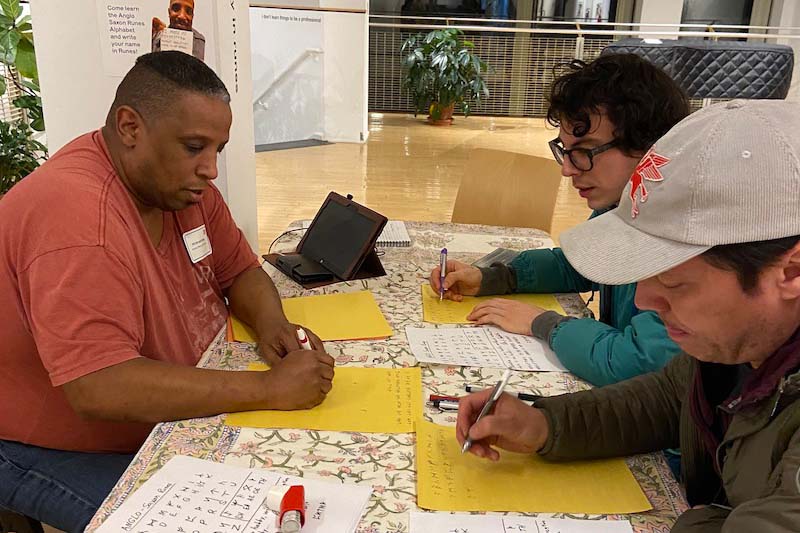
Security officer Peter Baptista (left) conducts a Runes Writing Workshop at the opening reception of ‘Words of Support’, Star Store Campus, Centre for Visual & Performing Arts, University of Massachusetts Dartmouth, USA, 2020
I interviewed five security and maintenance officers, then together with them picked out quotes to install on the walls throughout the building, some in the same position as Seaman’s text, deliberately confusing building users and questioning what gets to be art. These quotes ranged from hilarious musings (“some art is over the top”, “most artists are crazy | how the hell can you come up with something like that?”) to introspective thoughts (“like most people | i’m both simple and complex | i’m an introvert, but i like people | i’m a living paradox”) and bitingly honest comments (“it’s hard to protect yourself from the chemicals at work”). On the opening night of Words of Support, various activities spotlighted a few of the men, such as Jim’s conversation booth, Wayne’s polish gwampki (a traditional Polish dish of cabbage roll stuffed with rice and meat, topped with tomato sauce) stand, and Peter’s Runes Writing Workshop. We each reflected publicly about the project. It was an opportunity for the community of students, lecturers, townsfolk, and more to gather and see these men differently within the context of their workplace.
Excavating
I’ve always been drawn to working with seniors, particularly women. In 2016, I started The Grandma Reporter, a collaborative publication project on senior women’s culture around the world. It was a way to gently excavate the complex inner worlds of elder women in a world that often renders them invisible, infantilised, or patronised. The first two issues, both done with the Hollywood Senior Center in Portland, Oregon, respectively explored style and the taboo subject of intimacy, which is broad and linked to many dimensions of health. Intimacy can be found in communion with self, caressing a plant, in deep conversation with a friend, a meal with family, or in physical touch, of which sex is just one component. With the intimacy issue, nine senior women and five younger women artists came together under a framework for the collaborative making of diverse content such as instructions for intimacy in everyday life, fantasy photo shoots, an intimacy manifesto, exploration of touch and movement, as well as a Senior Women’s Erotica Club. We also conducted a survey with senior women on whether they wanted and would pay for companionship and sex with men. In this way, the project kept going, like tendrils extending and curling into themselves the more you water their roots.
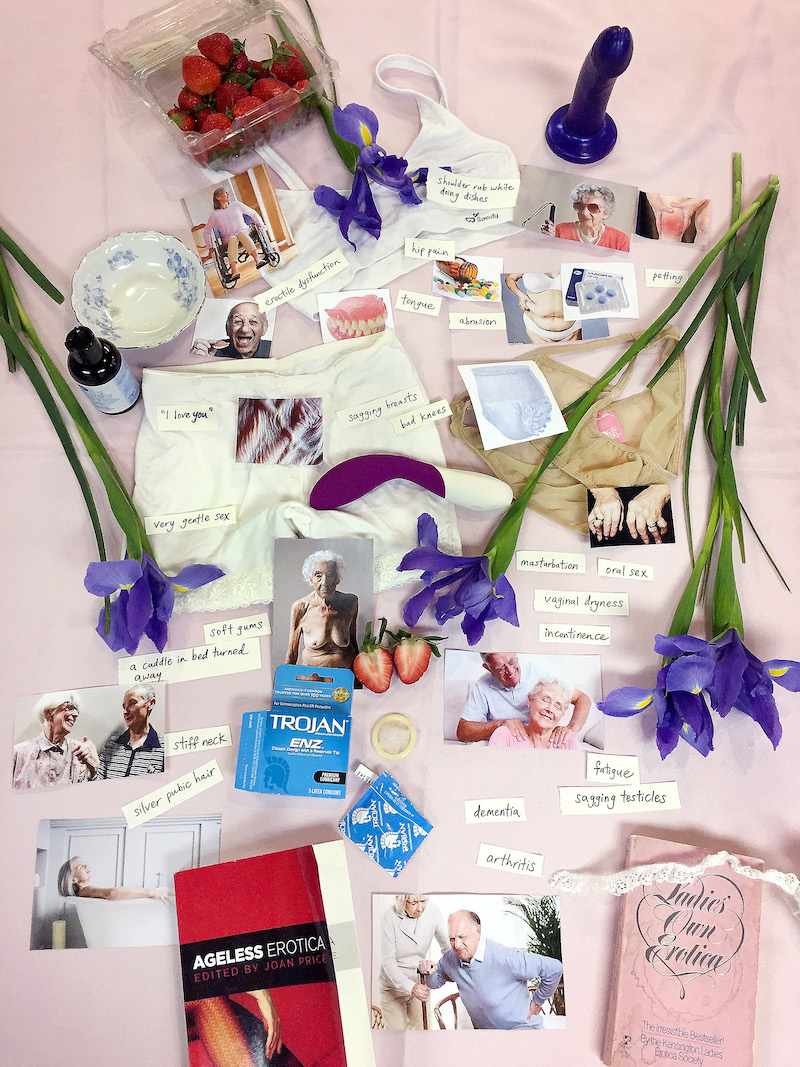
Prompts for the Senior Women’s Erotica Club, ‘The Grandma Reporter’ Issue 2: Intimacy, Portland OR, USA, 2019
When the door opens to a hitherto silent cave, a lot can flood forth if we commit to collective study and creative expression. In their devotion to the project, these women were also trying to be seen by their own selves. With a 40-page newspaper publication, we organised a launch party at the senior centre with readings (affording the women a chance to be heard by others of their community, including other women who had not wanted to join the project because they perceived intimacy as shameful or dirty) and a women-only discussion on intimacy (all women welcomed, including cis, lesbian, bi, queer, trans). The latter was a precious space where some forty women gathered tentatively yet passionately to talk about things that are rarely acknowledged and spoken about.
Not Grey: Intimacy, Ageing & Being is the Singaporean version of this, commissioned as part of T:>Works’ Festival of Women N.O.W. (Not Ordinary Work). It manifested as an intimate, interactive, virtual experience anchored in performance and film, accompanied by issue three of The Grandma Reporter. Coming forward in Singapore is arguably more difficult, but fifteen women did. They reflect on the wilderness inside a woman’s soul, romance in later years, self esteem, waving goodbye with care, lost connection, sex, spirituality, lineage, finding truth, the life force that moves one to dance till one’s last breath, a new lease of life, and more. As with before, I play multiple roles—that of facilitator, listener, young woman learning. One of the collaborators called me a midwife, which both rings true and is ironic given the decades I have to walk before I get to where they are. Perhaps it is more accurate to say that, as women coming together in an alchemical process that calls for vulnerability and honesty, we are birthing one another as we see, excavate, and allow, so as to cry, breathe, write, caress, dance, and sigh.
I was recently asked if I have unfurled things about myself through my work, and whether I am able to be myself in the process. The question surprised me because the socially engaged artist is sometimes decentered and at other times exaggeratedly thought of as a magnanimous figure helping others in need. This work has given me the opportunity to live temporarily in vastly different universes with varying levels of leadership and authorship in collaborative expression. To responsibly address this privilege is not to become artist-as-saviour and erase the artist from social art processes in favour of authorship nobly surrendered to collaborators. It is to own the initiation, presence and level of sparking, guidance, or organising that the artist brings where others do not—and vice versa. It is to see the artist as being shaped by these encounters as much as collaborators are. Like a destined turn of the page, each project is an opportunity to confront something within—from my relationship with the prison industrial complex to whether I will experience the same desires, loneliness or resilience as my collaborators when I am 70. For me, “being yourself” is allowing oneself to be taken into the mysterious reaches of who you think you are, or could be. You go there, and then see what happens. Because our society rarely facilitates that, art must.
About Salty Xi Jie Ng
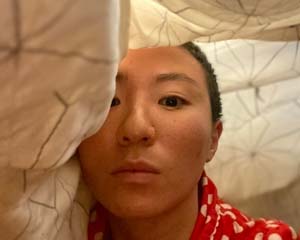
Salty Xi Jie Ng co-creates semi-fictional paradigms for the real and imagined lives of humans within the poetics of the intimate vernacular. Often playing with relational possibilities, her interdisciplinary work is manifested from fantasy scores for the present and future that propose a collective re-imagining through humour, care, subversion, play, discomfort, a celebration of the eccentric, and a commitment to the deeply personal. Her practice dances across forms such as brief encounter, collaborative space, variety show, poem, conversation, meal, publication, film, performance.
Salty has an MFA in art & social practice from Portland State University. She was recently artist-in-residence or artist fellow at the Singapore Art Museum, University of Massachusetts Dartmouth, New Bedford Whaling National Historical Park, and Buangkok Square. Her work has been supported by diverse platforms from Singapore Art Week, Elsewhere Museum, No Star Arts Grant, and Kaman Art Foundation, to King School Museum of Contemporary Art, Singapore International Film Festival, and Hollywood Senior Center. She was the 2020-21 editor of Conversations On Everything / Social Forms of Art Journal, a Portland OR publication.


